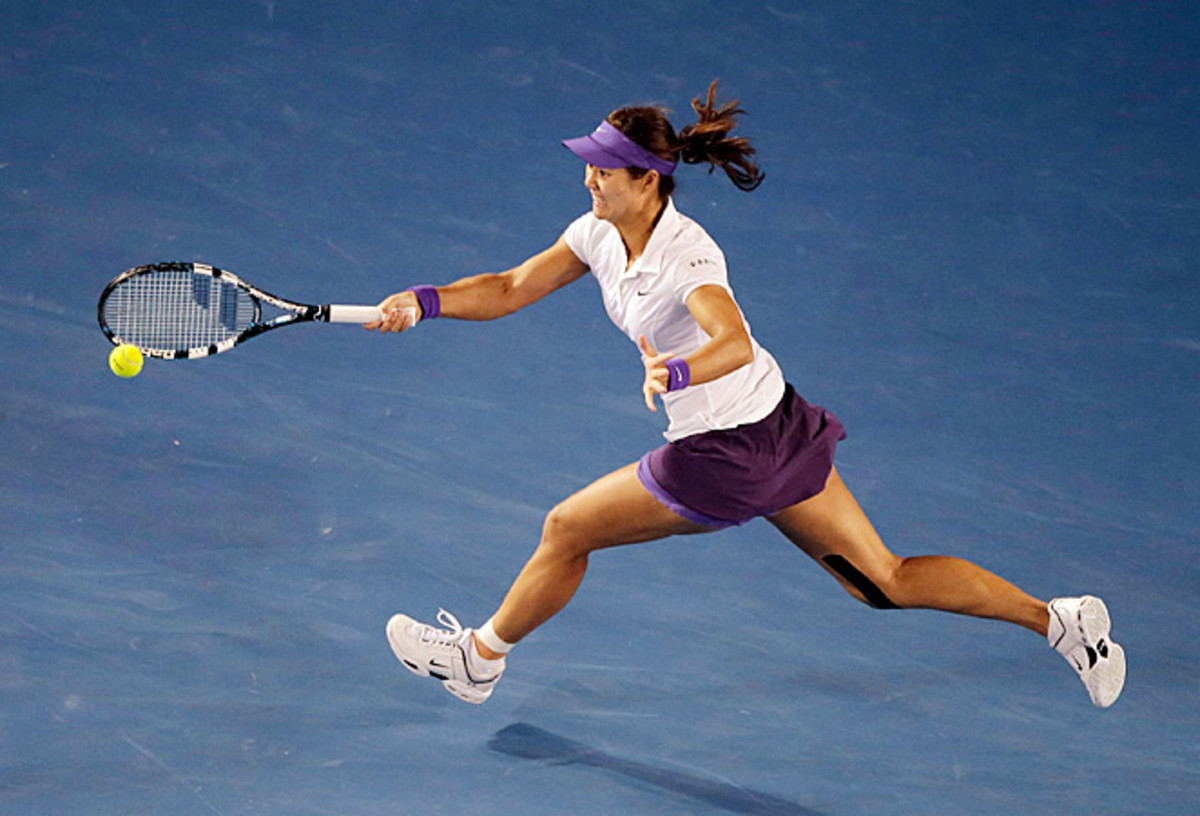Chinese interest key to Australian Open future
MELBOURNE, Australia (AP) -- When Li Na saw all the Chinese flags and heard the cheers of "Jia You," or "Let's Go" in Mandarin, during her Australian Open final against Victoria Azarenka, she thought she might have been in Beijing.
"I can hear a lot of Chinese fans, yeah," she said after losing to Azarenka in three sets Saturday night. "I was, oh, looks like China Open."
Li was joking, but Australian Open organizers would be pleased to hear the comparison. The tournament has long billed itself as the "Grand Slam of Asia-Pacific," and in recent years, it has stepped up its efforts to court increasingly affluent and tennis-mad fans in China.
With Li making the women's final for the second time in three years, this has been easy to do.
Attracting TV viewers was the first priority. When Li, China's top player, reached her first Grand Slam final at Melbourne Park in 2011, losing to Kim Clijsters, the tournament drew 120 million viewers in China.
Seeing numbers like these, Tennis Australia signed a three-year deal with China Central Television and the Shanghai Media Group to broadcast the tournament throughout China, with a guaranteed minimum number of hours of coverage.
The deal was in place in time for last year's tournament, which attracted 115 million viewers - without Li or any other Chinese player doing well.
"It'll be very interesting to see what this year's number is," said Steve Ayles, Tennis Australia's commercial director. "We're certainly awaiting that with some anticipation."
The tournament has also tried to build up its brand in China by taking the Australian Open trophy on a tour of the country, creating a Mandarin version of the Australian Open website and setting up an Australian Open account on China's version of Twitter, Sina weibo.
Organizers also set up a tournament for aspiring players from the Asia-Pacific region to compete for a wild card into the main draw.
The first edition of the playoff was held in China in October, and the wild cards went to two players from China - Zhang Yuxuan, who competed in the women's tournament, and Wu Di, who became the first man from mainland China to play in the main draw.
More tour operators in China are offering package tours to Melbourne, as well. Ayles said these tennis-themed trips increased by 82 percent this year.
"What it means is when a Chinese player plays particularly well, because we have this all in place, it just heightens level of awareness of the Australian Open," Ayles said. "Right across the board, when we have a player like Li Na play well and get to a final, obviously it helps underpin our strategy in China."
Part of the reason for an outreach program like this is sheer protectionism. Several years ago, Tennis Australia feared it could lose its Grand Slam to a booming Asian city like Shanghai, eager to increase its profile on the global stage.
"Obviously if your business model is underpinned on 22 million people, it's quite a challenge for you," Ayles said, referring to the population of Australia.
"There's no question being part of a bigger region, that's where the opportunities for growth comes," he added. "This is not 2-to-5-year strategy; it's 20-, 40-year strategy."






